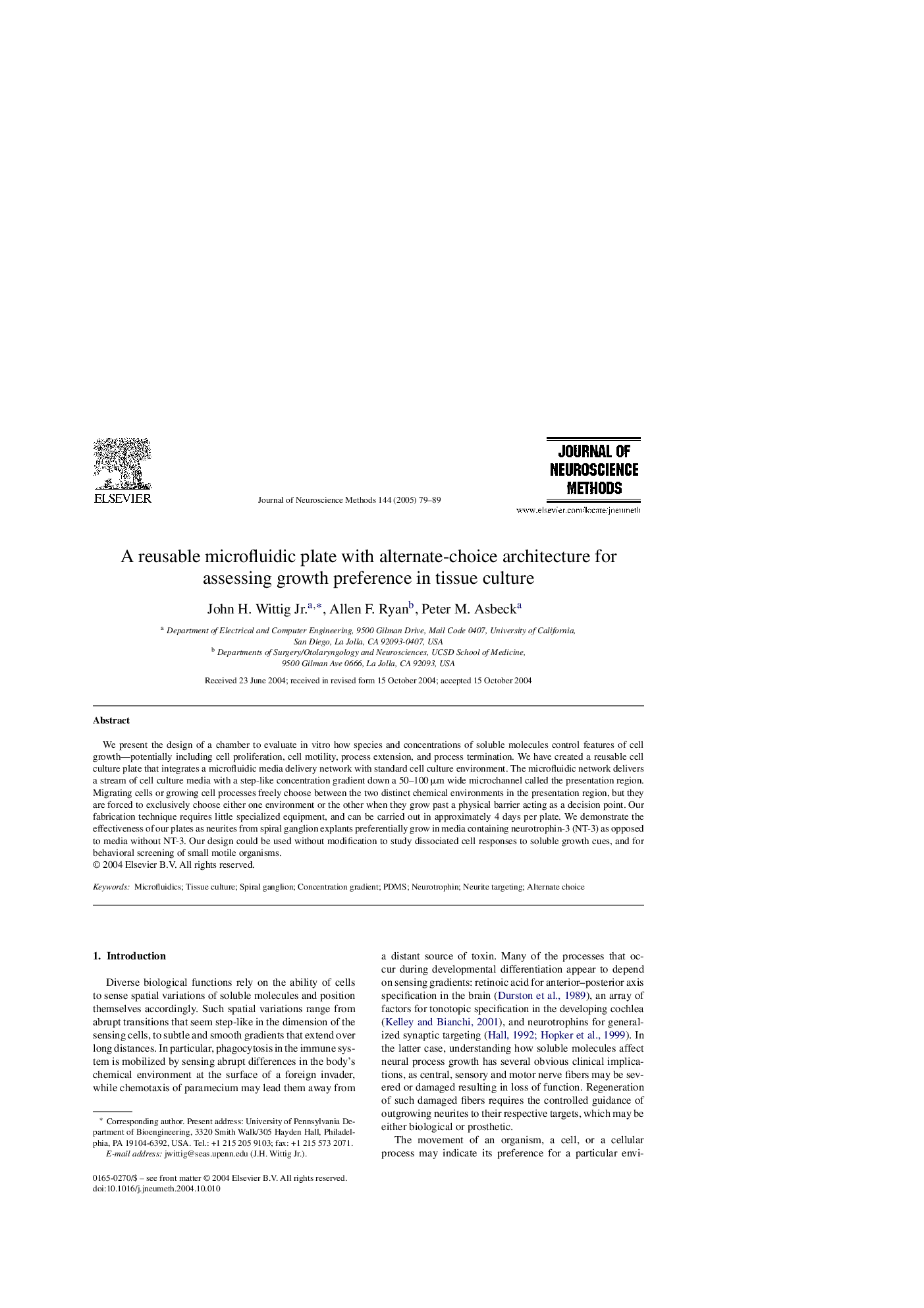| کد مقاله | کد نشریه | سال انتشار | مقاله انگلیسی | نسخه تمام متن |
|---|---|---|---|---|
| 9424294 | 1295258 | 2005 | 11 صفحه PDF | دانلود رایگان |
عنوان انگلیسی مقاله ISI
A reusable microfluidic plate with alternate-choice architecture for assessing growth preference in tissue culture
دانلود مقاله + سفارش ترجمه
دانلود مقاله ISI انگلیسی
رایگان برای ایرانیان
کلمات کلیدی
موضوعات مرتبط
علوم زیستی و بیوفناوری
علم عصب شناسی
علوم اعصاب (عمومی)
پیش نمایش صفحه اول مقاله

چکیده انگلیسی
We present the design of a chamber to evaluate in vitro how species and concentrations of soluble molecules control features of cell growth-potentially including cell proliferation, cell motility, process extension, and process termination. We have created a reusable cell culture plate that integrates a microfluidic media delivery network with standard cell culture environment. The microfluidic network delivers a stream of cell culture media with a step-like concentration gradient down a 50-100 μm wide microchannel called the presentation region. Migrating cells or growing cell processes freely choose between the two distinct chemical environments in the presentation region, but they are forced to exclusively choose either one environment or the other when they grow past a physical barrier acting as a decision point. Our fabrication technique requires little specialized equipment, and can be carried out in approximately 4 days per plate. We demonstrate the effectiveness of our plates as neurites from spiral ganglion explants preferentially grow in media containing neurotrophin-3 (NT-3) as opposed to media without NT-3. Our design could be used without modification to study dissociated cell responses to soluble growth cues, and for behavioral screening of small motile organisms.
ناشر
Database: Elsevier - ScienceDirect (ساینس دایرکت)
Journal: Journal of Neuroscience Methods - Volume 144, Issue 1, 15 May 2005, Pages 79-89
Journal: Journal of Neuroscience Methods - Volume 144, Issue 1, 15 May 2005, Pages 79-89
نویسندگان
John H. Jr., Allen F. Ryan, Peter M. Asbeck,